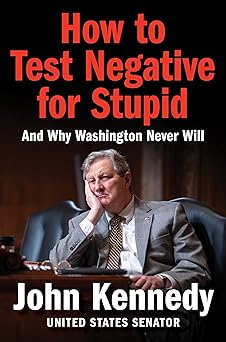
Ben Carson’s Created Equal is part memoir, part primer, and part polemic: a book that seeks to reframe the American conversation about race by weaving personal narrative, historical interpretation, and political argument into a single, tightly argued volume. Carson — who rose from a modest Detroit childhood to international renown as a pediatric neurosurgeon and later served in public office — writes with the confidence of someone used to decisive action. The result is a readable, often provocative book that will resonate strongly with readers who already share many of Carson’s assumptions and will frustrate those looking for more nuance or broader historiographical engagement.
Structure and tone
Carson organizes the book into three broad movements implied by the subtitle: the painful past, the confusing present, and a hopeful future. The pacing is brisk; chapters are short and centered on evocative anecdotes, historical snapshots, and policy prescriptions. The tone is earnest and exhortatory rather than academic. Carson’s prose is plain, direct, and geared toward a general audience: he wants to persuade, not to perform scholarly detachment. That makes the book accessible, but it also means Carson privileges rhetorical clarity over deep engagement with competing evidence or with the complexity of scholarship on race.
Strengths
-
Powerful personal narrative. Carson’s own life story — from inner-city struggles to professional triumph — is one of the book’s strongest elements. He uses his biography effectively to illustrate themes about personal responsibility, family, education, and faith. Those sections are compelling because they are concrete, specific, and emotionally immediate.
-
Clear moral vision. Carson is unapologetically moral in his framing. He articulates a vision of individual agency, civic duty, and the transcendent value of American ideals. For readers seeking optimism and a focus on solutions, Carson’s arguments for strong families, educational opportunity, and faith-based initiatives feel constructive.
-
Readability and accessibility. The book is written for readers who may not have deep prior knowledge of American racial history or public policy. Carson’s use of simple, sometimes anecdotal examples makes complex issues feel approachable.
-
Policy-minded. Carson moves beyond elegy to propose concrete policy ideas — about education reform, housing, and criminal justice — that reflect his long engagement with public policy. For readers who want prescriptions rather than only critique, this portion of the book is a useful starting point.
Weaknesses
-
Selective use of history. Carson’s historical account tends toward a selective narrative that emphasizes certain injustices and downplays others. Important structural forces — such as systemic discrimination in housing, employment, and lending, and the cumulative effects of policies like redlining — receive less detailed analysis than readers of mainstream historiography would expect. The past is often presented in ways that support Carson’s thesis rather than tested against competing historical interpretations.
-
Underdeveloped engagement with structural arguments. While Carson acknowledges that racism exists, he is skeptical of broad structural explanations and critical of movements that foreground systemic causation. That skepticism leads him to privilege individual-level explanations and remedies. Critics will argue that this moves too quickly from describing individual success stories to implying they are broadly generalizable without systematically addressing structural barriers.
-
Rhetorical framing of the present. Carson’s diagnosis of the “confusing present” tends to pit identity-based politics and grievance frameworks against what he calls an aspirational American creed. His critique of modern social movements is energetic but sometimes lacks the careful delineation of which demands are reasonable, which are rhetorical excesses, and how legitimate grievances might be addressed alongside his preferred solutions.
-
Limited engagement with scholarship and dissenting voices. The book is not a scholarly text and makes few sustained attempts to interact with dissenting academics, historians, or activists. For readers looking for a balanced literature review or careful weighing of evidence, the lack of footnotes, caveats, and scholarly dialogue will be a drawback.
Key themes
Individual responsibility and family: Carson consistently emphasizes the stabilizing role of the family and personal responsibility. He argues that strengthening families and character formation should be central to any policy agenda addressing racial disparities.
Education and opportunity: Education is a recurring solution in Carson’s pages. He champions school choice, community involvement, and high expectations as levers of social mobility, drawing on his own life story as evidence that opportunity can be transformational.
Critique of victimhood culture: Carson pushes back against what he sees as a culture of victimhood. He contends that framing racial issues primarily through victimization is disempowering and counterproductive and that America’s ideals allow for uplift when embraced.
Faith and moral renewal: Religious faith and moral discourse are woven throughout the book as necessary for societal repair. Carson’s recommendations are often faith-friendly and aimed at mobilizing religious institutions for social good.
Who will find it convincing
Readers already sympathetic to conservative or faith-informed approaches to social policy will find much to like. Readers who prioritize policy proposals centered on family stability, school choice, character education, and private-sector and faith-based solutions will appreciate Carson’s focus and tone. Those who value inspirational biographies mixed with public policy prescriptions will also enjoy the book.
Who may find it frustrating
Readers looking for exhaustive historical analysis, nuanced engagement with structural racism, or balanced interaction with left-of-center scholarship will likely find the book unsatisfying. Activists and scholars who view structural and systemic explanations as central to understanding racial disparities will find Carson’s emphasis on individual agency insufficient.
Balance and fairness
Carson is at his most persuasive when he tells stories from his own life or from people he met; those passages are candid and often moving. However, when he steps from narrative to broad historical claims, the book’s limitations become apparent. Carson’s reading of American history tends to favor counter-narratives that emphasize progress and individual triumph over sustained analysis of systemic harms. Readers should treat his historical claims as one interpretive perspective among many and cross-check facts and contexts before accepting sweeping generalizations.
Writing quality
The prose is serviceable and rhetorically aimed at persuasion. Carson’s voice—forthright, occasionally didactic—will appeal to readers wanting clarity rather than academic hedging. The book’s structure and short chapters make it a quick read; whether that is a virtue depends on whether you want a book that catalyzes thought and action or one that provides exhaustive study.
Final assessment
Created Equal is an earnest, provocative contribution to the debate about race in America. Its greatest strengths are Ben Carson’s moral clarity, narrative power, and policy orientation. Its greatest weaknesses lie in selective historical treatment and a reluctance to fully engage structural explanations and opposing scholarship. The book works well as a statement of Carson’s vision—a blend of personal testimony, conservative public policy, and moral exhortation—but it should be read alongside other works that emphasize systemic analysis if the reader seeks a fuller, more balanced understanding of the many forces shaping race and inequality in the United States.
Recommendation
If you are curious about a faith- and character-centered conservative approach to race, or if you appreciate concise, anecdote-driven argument, this book is worth reading. If your goal is to survey the full scholarly debate about race, or to study structural analyses in depth, pair Carson’s book with works that foreground systemic historical factors and empirical social-science research to get the broader picture.






